The Fascinating History of Buda Castle, Budapest
Buda Castle and the Castle Quarter are among the most beautiful sights in Hungary. The castle’s history, architecture, and critical role in the city’s life make it an unmissable destination. In this blog, we show you the best things to see and do here by day and night!
While many European castles slowly collapsed and became forgotten due to conflicts and wars, Buda Castle was like a phoenix from its ashes, always keeping its reputation in the city. Visiting the Castle District and spending a few hours discovering every inch of it might just be one of the best things to do in Budapest.
If you want an immersive experience with a knowledgeable local guide, consider our fun and fascinating Buda Castle Tour in Budapest, part of our wider range of Budapest electric scooter tours.
But for now, read on and discover the remarkable history of our city’s famous Buda Castle District. If you have any questions for the E-Magine team at any point, please don’t hesitate to contact us.
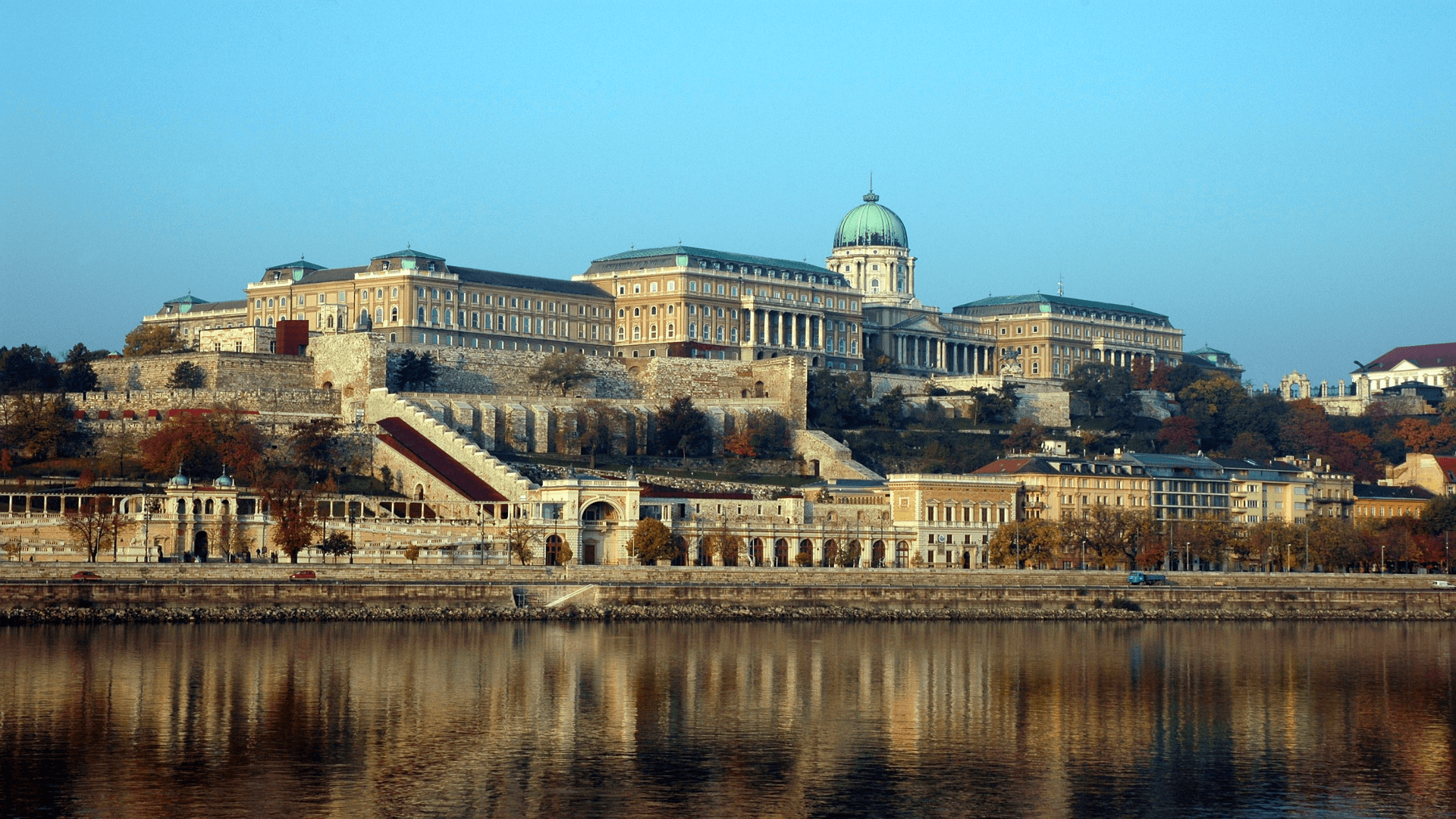
What is the History of Buda Castle?
Nestled atop Várhegy (also known as Castle Hill), overlooking the Danube River with a regal air, Buda Castle stands as a testament to centuries of captivating history. From changing hands between empires to destructive wars, this iconic Hungarian landmark has a fascinating story to tell. Its history could fill several books, so we’ll only skim over it here. If you want to immerse yourself in the full tale, you will have to visit in person!
Buda Castle’s story begins in the 13th century, around 1241 to be precise, with King Béla IV. As Mongol invaders swept through Hungary, leaving chaos in their wake, Béla IV sought to create a fortress that would protect the city of Buda. The result? The original Buda Castle, a medieval marvel perched high above the city.
King Béla IV, with a mix of foresight and determination, transformed this strategic hillside into a stronghold that would guard against future invasions and become a symbol of resilience.
As we fast forward through the annals of history, Buda Castle experiences good times and bad, with makeovers, expansions, and periods of decline.
After the Royal Court was established here, a long golden age began. The Anjou Dynasty built a beautiful Gothic palace in the 14th century which King Sigismund of Luxembourg extended.
Inspired by the Italian Renaissance style, King Matthias then reconstructed the Royal Palace. However, starting with the Turkish occupation of Buda in 1541, the palace fell into disrepair. By 1686, when the city was liberated, it was essentially destroyed.
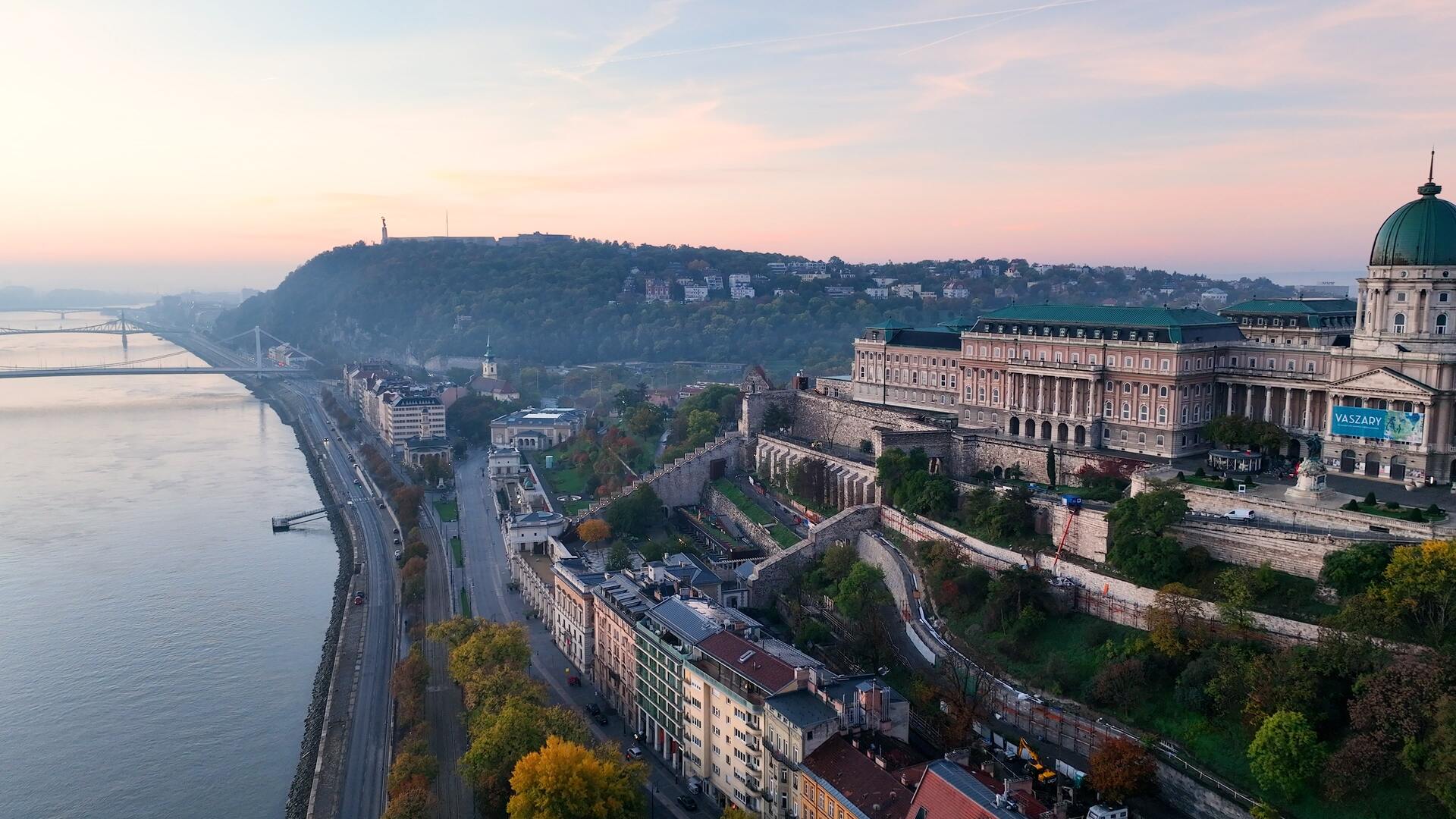
The Habsburgs of Austria then assumed control of Hungary during the 18th century, during which time the country flourished. Buda Castle was also rebuilt numerous times while our country was part of the Austrian Empire. This includes the extension and restoration of Matthias Church and, to celebrate the 1,000th anniversary of the Hungarian state, the construction of Fisherman’s Bastion around it.
As the 19th century progressed, Buda Castle reflected Hungary’s continued success and development. Increasingly modern projects took place intending to create a royal palace as opulent as any other in Europe.
The Castle Garden Bazaar and Castle Garden Kiosk followed between 1875 and 1882, but the 20th century introduced a turbulent era marked by wars and upheaval. Buda Castle suffered severe damage during World War II, its once-majestic facade scarred by the ravages of conflict. But fear not! This story takes a turn towards restoration and revival!
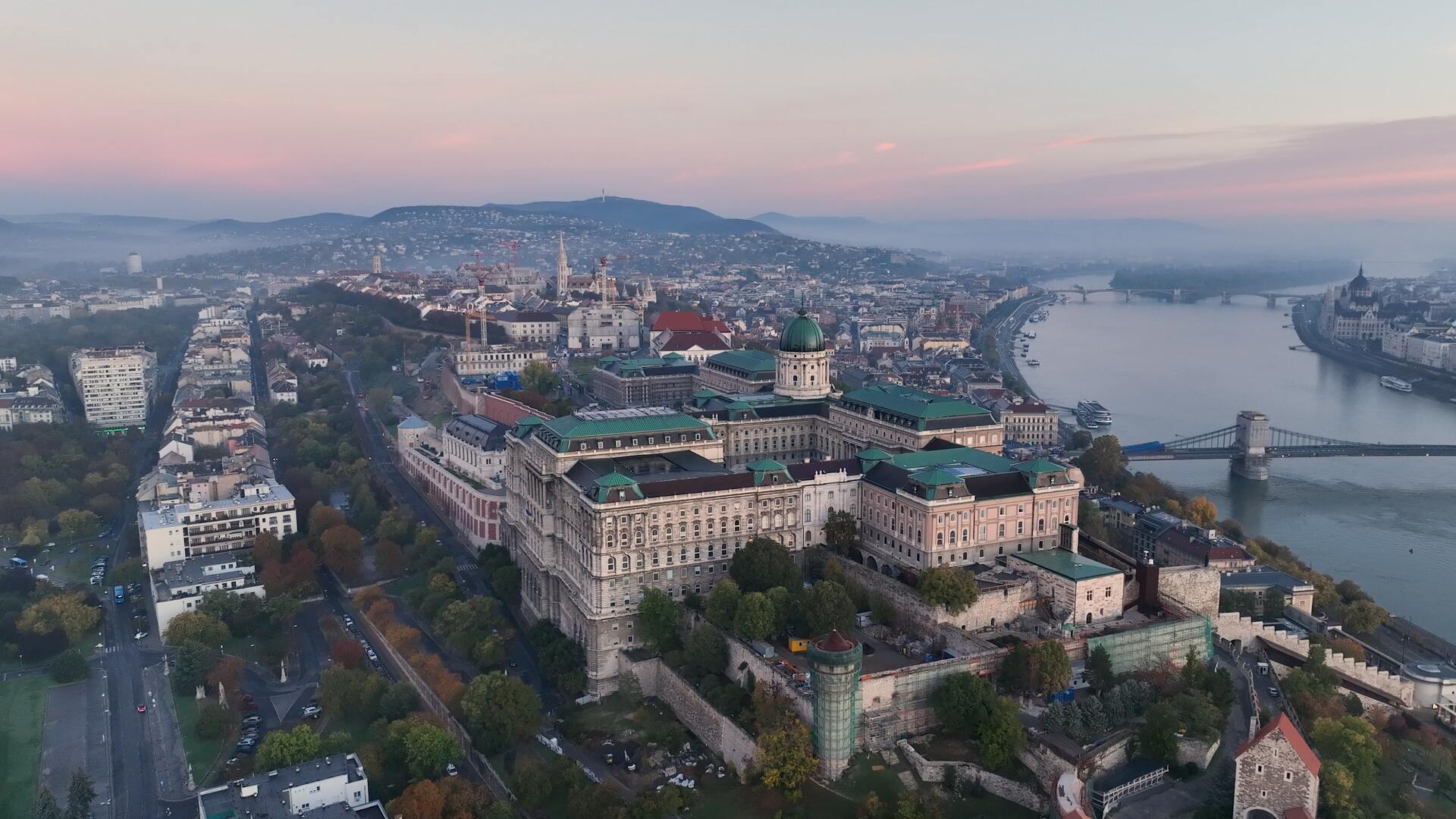
In the post-war years, Hungary dedicated itself to reconstructing its historic gem. The castle rose from its ashes like a phoenix, a symbol of resilience and an enduring connection to the past. Wander through the reconstructed courtyards, and you’ll find echoes of the past seamlessly blended with modern elegance.
Today, Buda Castle stands not only as a historic monument but also as a vibrant cultural hub. Museums, art galleries, and charming cafes beckon visitors to explore the nooks and crannies of this enchanting fortress.
From its medieval origins, through royal dramas and political upheavals, to its phoenix-like resurgence in the modern age, this castle has withstood the test of time. As you stand on its hallowed grounds, let the whispers of centuries past guide you through a captivating tale that is the heart and soul of Budapest.
When you visit Buda Castle, you’re not just walking through stone walls — you’re stepping into a living, breathing chronicle of Hungarian history.
If you have enjoyed this short history of Buda Castle, we think you’ll appreciate our blog The Importance of Heroes’ Square, another of our city’s most important historical places.
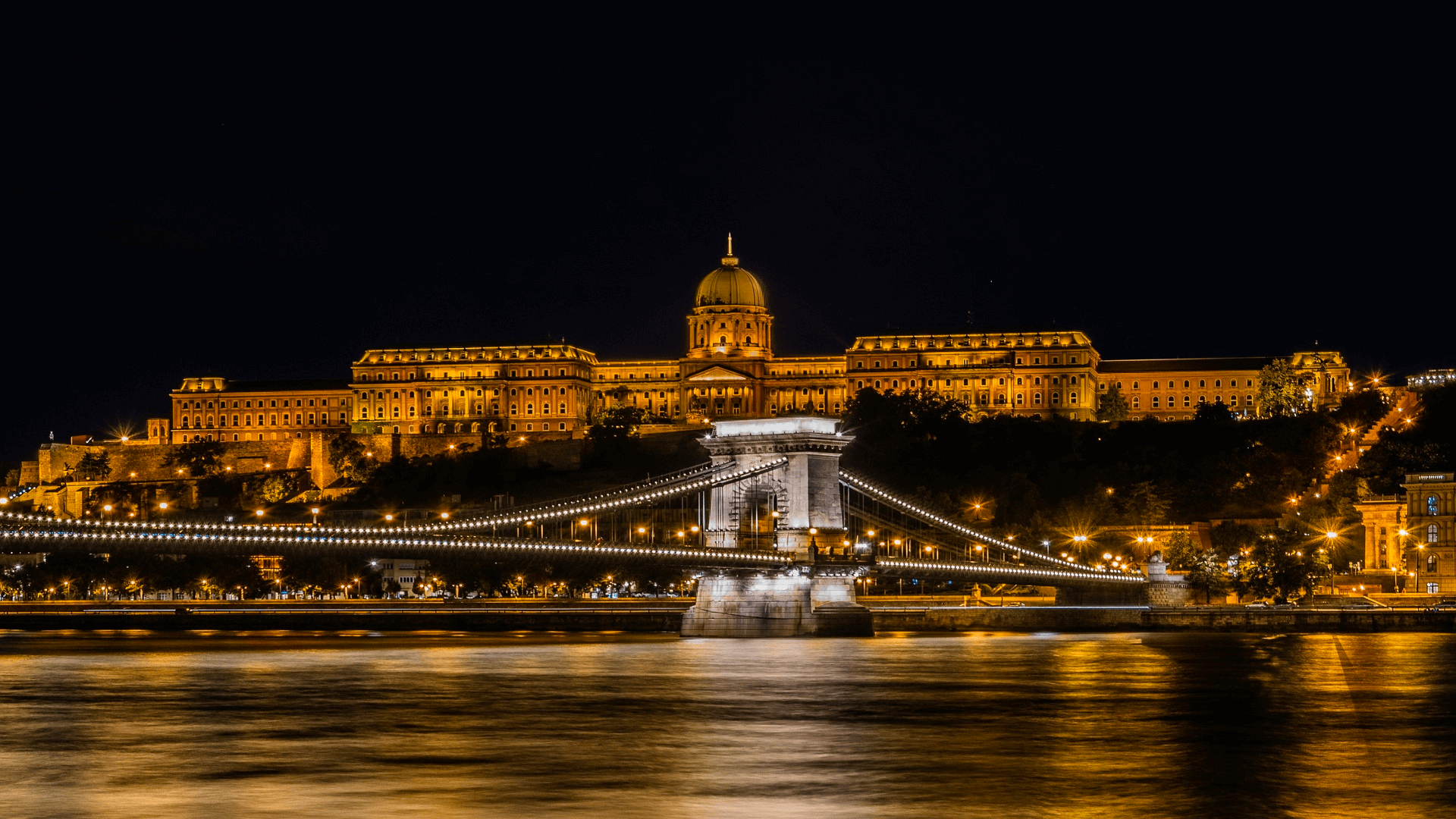
What to See at Buda Castle During the Day
Budapest is one of Europe’s main tourist destinations, and Buda Castle is one of the jewels in our city’s crown. Visiting during the day, you can meet a vibrant crowd in Buda Castle District, try all the restaurants and confectioneries, or get a coffee while you enjoy the many attractions and beautiful views this area provides.
The E-Magine Tours team recommends the following attractions in Buda Castle!
Royal Palace
The Royal Palace, the symbolic architectural masterpiece of our cityscape, is located in Szent György Square. From the 13th century, it hosted the Hungarian kings; from this period, the medieval walls and some buildings survived, but in the 19th century, it was significantly remodelled based on the designs of Miklós Ybl and Alajos Hauszmann.
The rooms and halls have not been reconstructed; the building today functions as a complex cultural institution. The Hungarian National Gallery, the National Széchényi Library, and the Budapest History Museum are located here.
The Budavári Wine Festival is held here yearly, but many other gastronomic and cultural events are also organised in Buda Castle.
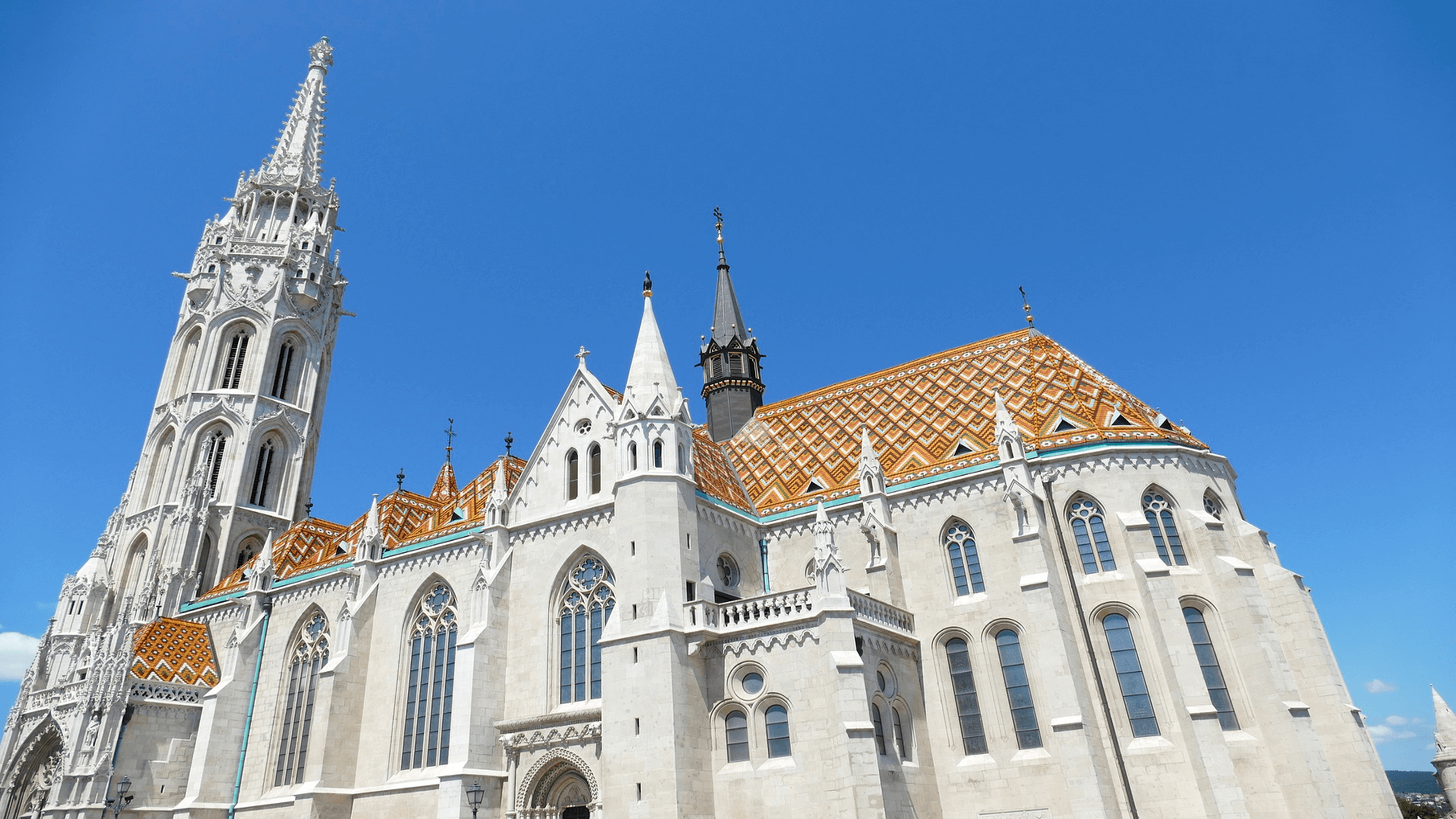
Matthias Church
The Matthias (Mátyás) Church, located in the Buda Castle District on Szentháromság Square, is a monumental building with a long and fascinating historical past. Two ruling parties were crowned within its walls: Ferenc József and Erzsébet, and Károly IV and Zita. King Mátyás married twice during his reign, and the weddings took place right here.
As we near the end of our guide to Buda Castle, let us point you toward our picks for the best cool and unusual things to do in Budapest. These more off-beat recommendations provide the perfect balance with our city’s famous, must-see attractions.
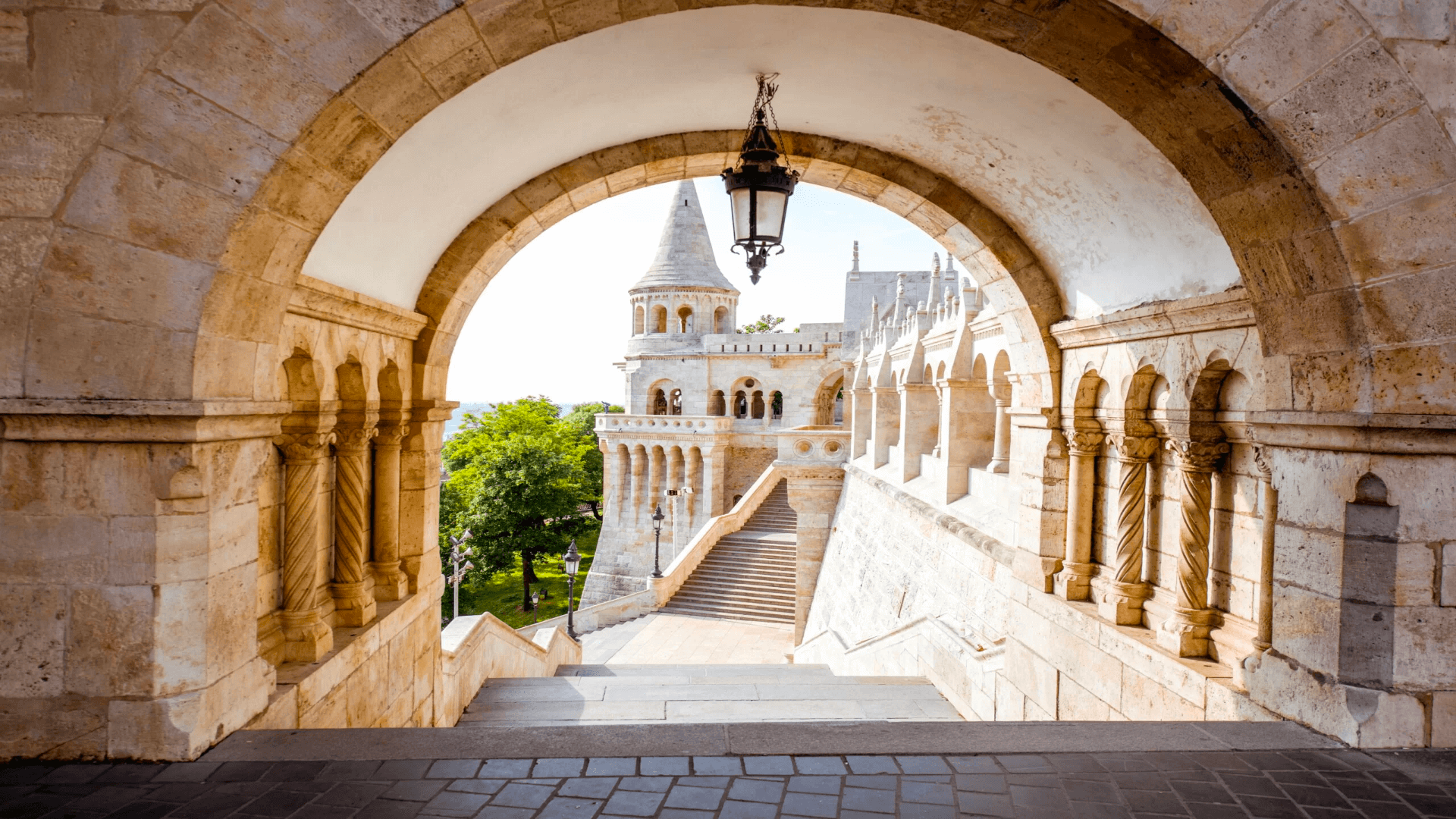
Fisherman’s Bastion
The Fisherman’s Bastion is one of Budapest’s best-known and most picturesque spots, one you’ve surely seen pictures of in the social media feeds of almost anyone you know who has travelled to Budapest.
But what makes this place so special? Well, it’s the unique panorama of Budapest that you can see from the neo-Roman observation terraces. In addition, its many balconies and windows provide a beautiful view of the other sights and the Danube.
Entering the Fisherman’s Bastion requires a ticket for most of the day but it’s free before 9 am and later in the evenings. You can get more information in English on the Fisherman’s Bastion website.
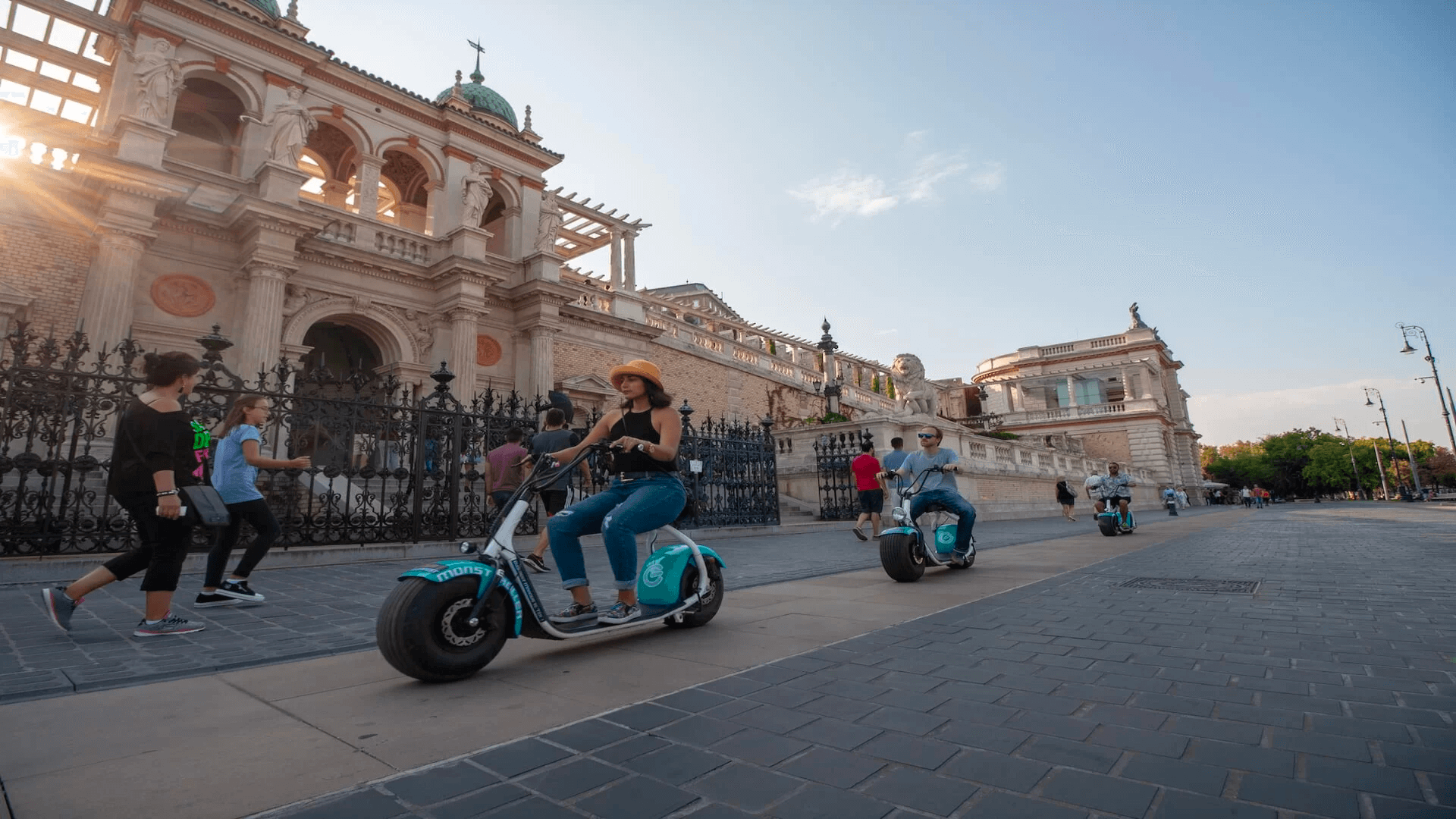
Castle District
The Castle District is beautiful in itself and is home to many hidden gems. From world-famous restaurants and hotels to confectioneries like Várfok Cukrászda or Ruszwurm for local treats. There are also famous statues you can look for all around the Buda Castle District depicting prominent Hungarian figures from the past.
If this history of Buda Castle has sparked your interest, let us present you with a convenient and comfortable way to discover it! E-Magine offers various e-scooter tours in Budapest that visit the castle area, including the All In Tour which covers the best sights of both Pest and Buda.
However, for a truly complete experience, you can’t beat our Buda Castle Tour in Budapest.
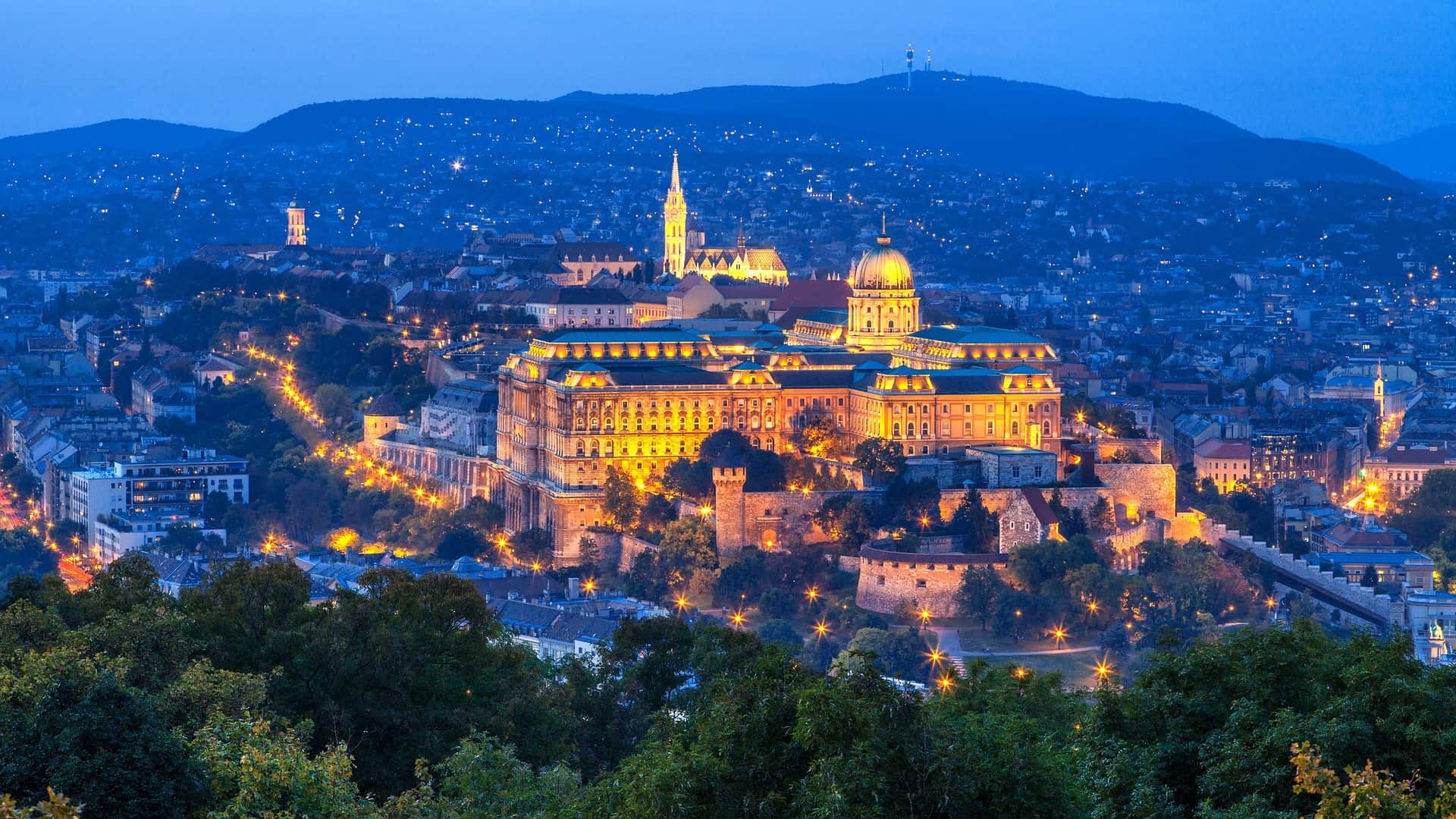
What to See at Buda Castle at Night
Visiting Budapest at night is like discovering a completely different, glowing city. Buda Castle is especially spectacular since both the Royal Palace and Matthias Church are lit up. The Fisherman’s Bastion provides a fantastic panoramic view of the illuminated bridges and the Parliament Building.
After you get tired of marvelling at the cityscape, you can take a walk — or ride! — on the enchanting streets of the Castle District. With the Budapest Night Tour on MonsteRoller e-scooters, you can discover Buda Castle’s magic after dark. Since at night, the number of visitors is very limited at Buda Castle; you can enjoy the attractions without a big crowd and take the best photos of you and your loved ones. This provides a unique opportunity to experience Buda Castle’s magic. During the summertime, you can even go up to the top of Fisherman’s Bastion free of charge!
The Best Way to Visit the Buda Castle District
Are you ready to book a fun and culturally enriching experience with us? Discover more about our Buda Castle Tour in Budapest and what you can expect on this adventure. And be sure to browse our full range of Budapest e-scooter tours for even more travel inspiration!
If you have any pre-booking questions for us, please get in touch for the answers you need.
